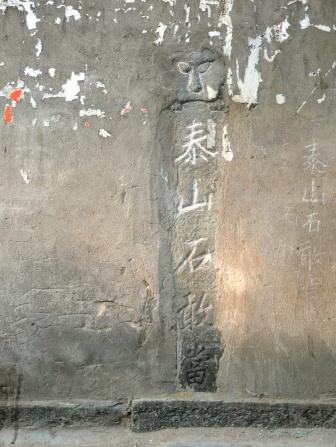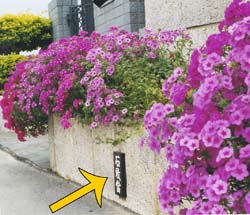Shigandang on:
[Wikipedia]
[Google]
[Amazon]


 ''Shigandang'' (; Japanese: ''ishigantō'') is an ornamental
''Shigandang'' (; Japanese: ''ishigantō'') is an ornamental 石敢當
http://www.masterlung.com/course06.html 泰山石敢�
泰山石敢當
/ref> which is used to exorcise evil spirits in

 ''Shigandang'' (; Japanese: ''ishigantō'') is an ornamental
''Shigandang'' (; Japanese: ''ishigantō'') is an ornamental stone tablet
A stele ( ),Anglicized plural steles ( ); Greek plural stelai ( ), from Greek , ''stēlē''. The Greek plural is written , ''stēlai'', but this is only rarely encountered in English. or occasionally stela (plural ''stelas'' or ''stelæ''), whe ...
with writing,http://www.masterlung.com/course06.html 泰山石敢�
泰山石敢當
/ref> which is used to exorcise evil spirits in
east Asia
East Asia is the eastern region of Asia, which is defined in both geographical and ethno-cultural terms. The modern states of East Asia include China, Japan, Mongolia, North Korea, South Korea, and Taiwan. China, North Korea, South Korea and ...
. 石敢當 are often associated with Mount Tai
Mount Tai () is a mountain of historical and cultural significance located north of the city of Tai'an. It is the highest point in Shandong province, China. The tallest peak is the '' Jade Emperor Peak'' (), which is commonly reported as being t ...
, and are often placed on street intersections or three-way junctions, especially in the crossing, which is often considered a spiritually dangerous place ().
Erecting Taishan shi-gan-dang nearby the houses, villages, bridges and roads has a long history in China. The phrase “石敢當” first appeared in Han Dynasty. During Tang Dynasty, these three characters have been carved on stones and were used to protect houses from evil things. Until Song Dynasty “Taishan shi-gan-dang” came out. It had been widely popular throughout the country to set up “石敢當” or “泰山石敢當” near villages and houses. What's more, this custom has also been spread to Han cultural circle overseas. No other Chinese folk-beliefs can compare with it considering its wideness. However, shi-gan-dang's function has been diversified that it not only prevents people from evil things, but also from wind, water and disasters. 泰山石敢當 has been listed among the first batch of national nonmaterial cultural heritage in 2006. Now this thousand-year-old belief has been protected as an important nonmaterial cultural heritage.
Apart from Shigandang, another option is to place a stone with Nāmó Ēmítuófó ().
See also
* Shi Gandang *Bagua
The bagua or pakua (八卦) are a set of eight symbols that originated in China, used in Taoist cosmology to represent the fundamental principles of reality, seen as a range of eight interrelated concepts. Each consists of three lines, each li ...
(八卦)
* Chinese folk religion
Chinese folk religion, also known as Chinese popular religion comprehends a range of traditional religious practices of Han Chinese, including the Chinese diaspora. Vivienne Wee described it as "an empty bowl, which can variously be filled ...
* Chinese ritual mastery traditions
Chinese ritual mastery traditions, also referred to as ritual teachings (, sometimes rendered as "Faism"),Yu-chi Tsao, 2012. or Folk Taoism (), or also Red Taoism (mostly in east China and Taiwan), constitute a large group of Chinese orders of ri ...
* Chinese spiritual world concepts
Chinese spiritual world concepts are cultural practices or methods found in Chinese culture. Some fit in the realms of a particular religion, others do not. In general these concepts were uniquely evolved from the Chinese values of filial piety ...
* Fu Lu (符籙)
* Kai Guang (開光)
* Spirit tablets
A spirit tablet, memorial tablet, or ancestral tablet, is a placard used to designate the seat of a deity or past ancestor as well as to enclose it. The name of the deity or past ancestor is usually inscribed onto the tablet. With origins in tra ...
Notes
Architecture in China Architecture in Japan Taoist architecture Taoist practices {{tao-stub